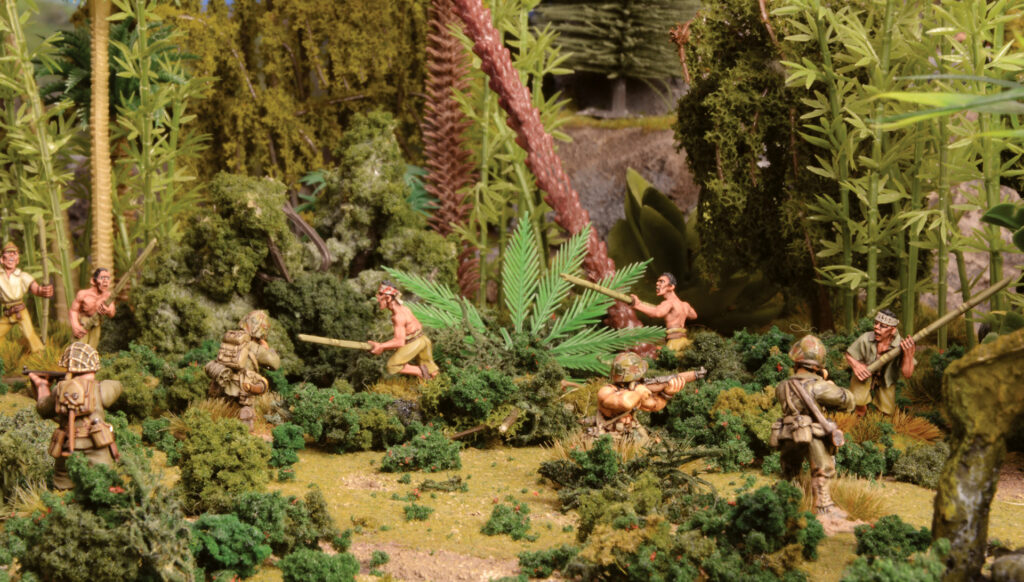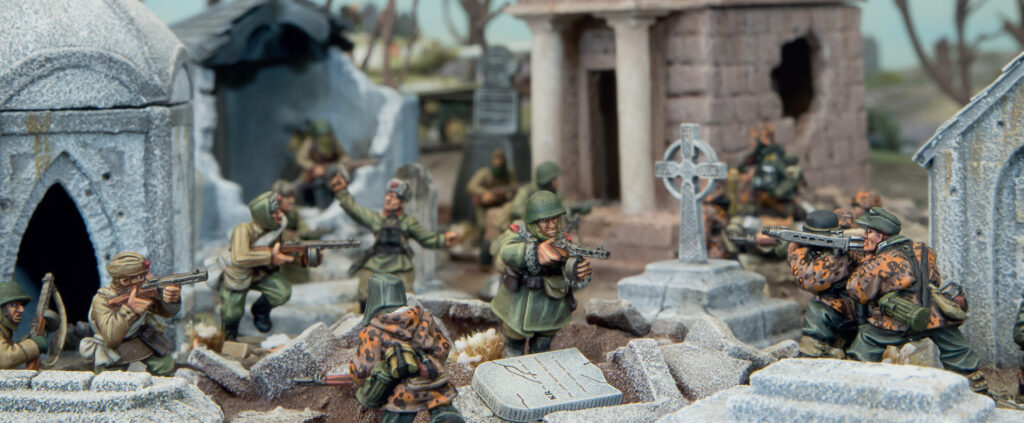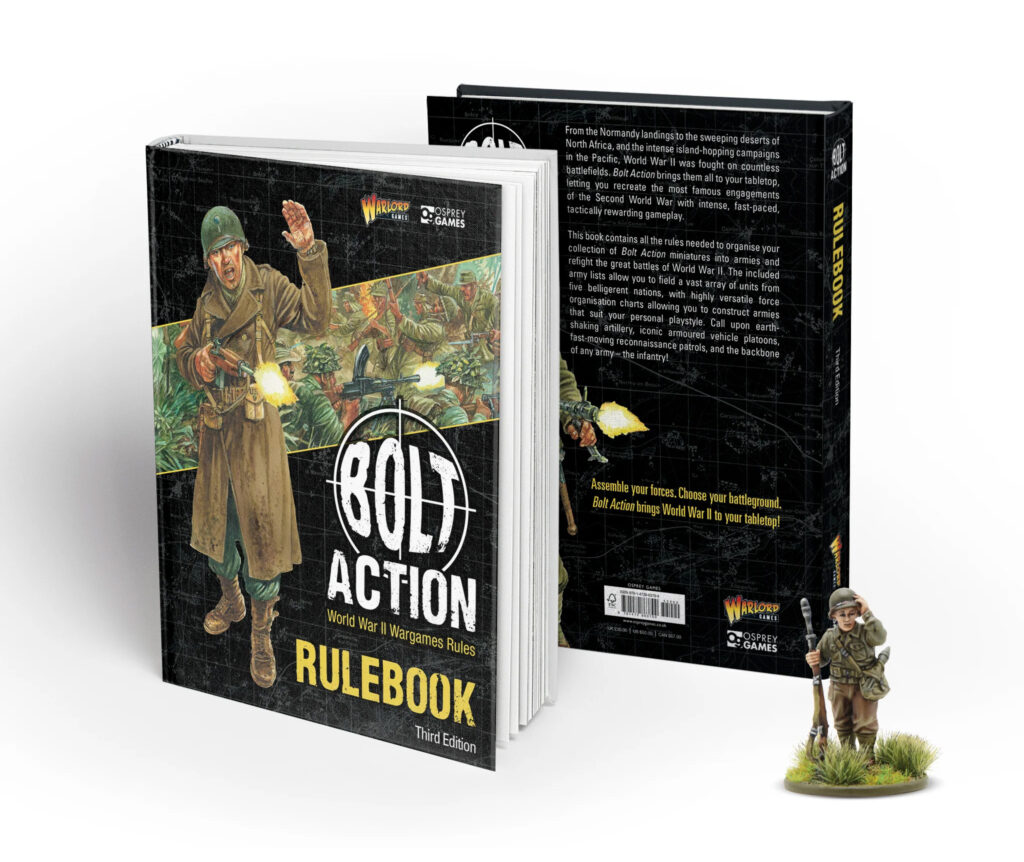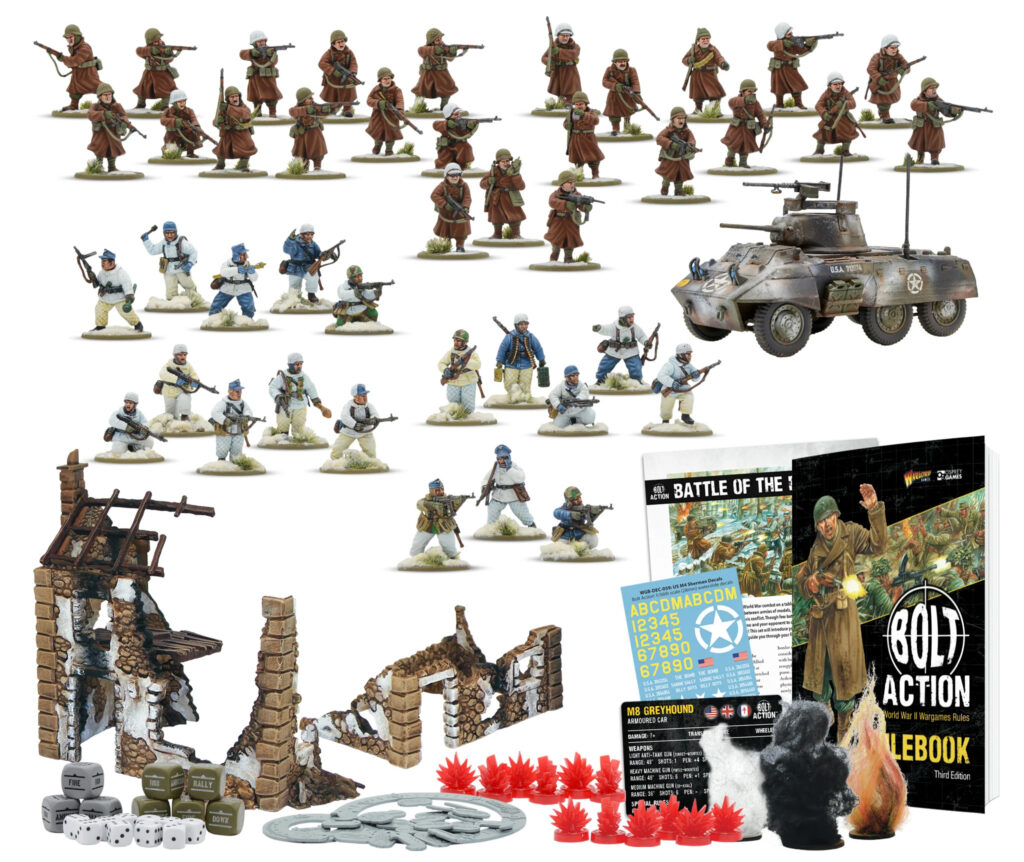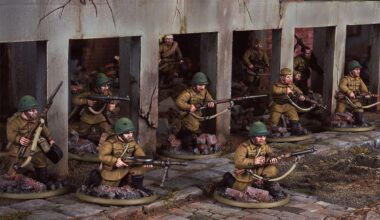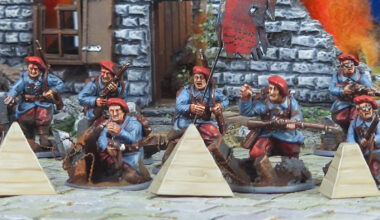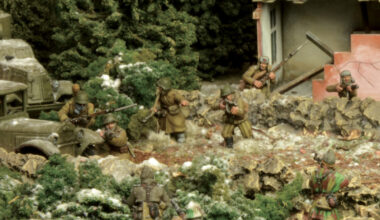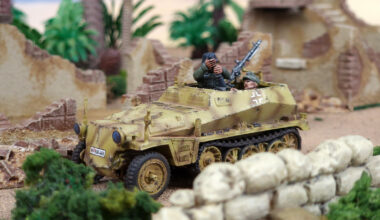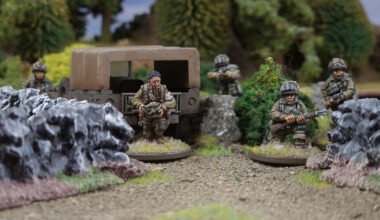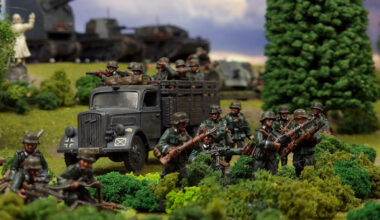Bolt Action: Third Edition is only a month away(!) and we’ve been absolutely loving watching the hype rise in our online community as we reveal more and more of the changes that will make our favourite WWII wargame even better. This week we’re looking at close combat, and how a few very minor tweaks to wording can have a big impact on the game!
Close combat (I.e. hand-to-hand fighting, and the kind of point-blank engagements where grenades are thrown, pistols blaze away, and, at least in the movies, someone usually gets whacked with a shovel) in Bolt Action is lethal. Two units enter – one unit leaves! Whenever you engage in close combat, you can guarantee that one unit is going to be destroyed, making it both an incredibly powerful tool in your arsenal, and a significant risk to take – just as it should be.
With Bolt Action: Third Edition, we wanted to keep that feeling of risk and lethality, but we also noticed that close combat by and large favoured the attacker, who would get to strike first in open ground. This is perfectly appropriate for the melees of earlier eras, where strength and momentum could carry the day, but doesn’t really represent the sheer danger of running headlong at a machine gun or squad of riflemen in WWII, and we saw quite a few close combat-oriented armies dominating tables in rather improbable ways!
The solution for this turned out to be really, really simple! The actual sequence of operations remains the same as Second Edition (see below:) but there’s been a change to ‘who strikes first’!
Let’s take the most ‘basic’ situation – two units in open ground. One unit declares a charge against the other, checks the distance and finds it’s within range, the opponent resolves reaction fire, and the two units get stuck in. So far, exactly the same as Second Edition. What’s different, and what’s very important – in this situation, the two units will fight simultaneously! This means that there’s a far greater chance of either a draw (in which case a new round is fought automatically), or the attacker losing the first round and being wiped out! Just by changing a couple of words, the entire dynamic of close combat has shifted, with assaulting an enemy unit going from being an absolute no-brainer in most circumstances, to a decision which requires a lot more consideration, and carries far more risk!
The other big change in terms of close combat is the Defensive Positions rule. For this, let us quote from the big book of Bolt Action!
Whenever the assault of the enemy has gone across obstacles or rough ground, or when the defender is being fought across an obstacle, the defender has the advantage of readying themselves for the onslaught and can place a few blows of their own as the enemy makes its way across the terrain. This means that, instead of both sides fighting simultaneously, the defender fights first, rolling to damage as above. The attacker first removes casualties as above, and then rolls to damage, but only with any surviving models. Finally, the defender removes casualties as normal and the winner is determined as above. Note, however, that defenders that are DOWN when they are assaulted cannot benefit from this defensive position bonus; the fight is resolved simultaneously as normal.
Once again, we can see that what’s happened is essentially close combat has become riskier for attackers, particularly when the defender has a chance to get dug in – combined with the new cover saves, you can really see just how vital terrain is going to be in the new edition! It’s not all doom and gloom for gung-ho players who want to get stuck in with the bayonet – you just need to bring the right tools for the job! In the case of dealing with the Defensive Positions bonus, the right tools come in the form of units with the Engineers special rule. Representing their specialised equipment and training for clearing out buildings, they nullify Defensive Positions when assaulting buildings, putting you back on an even footing!
Close combat remains a powerful tool in Bolt Action: Third Edition, but it’s been modified to better represent the dangers faced by the attackers as they close with the enemy, and better represent the significant advantages to being ready to receive a charge in a defensible position. Playing with controlled aggression and well-timed assaults will still be a very viable strategy, but beware the mad dash across the table to get to grips with the enemy – this is a World War II game, after all!
Want to charge in to Bolt Action: Third Edition? Make sure you’ve got your pre-order sorted now, and get your hands on the brand new rulebook for launch day!

